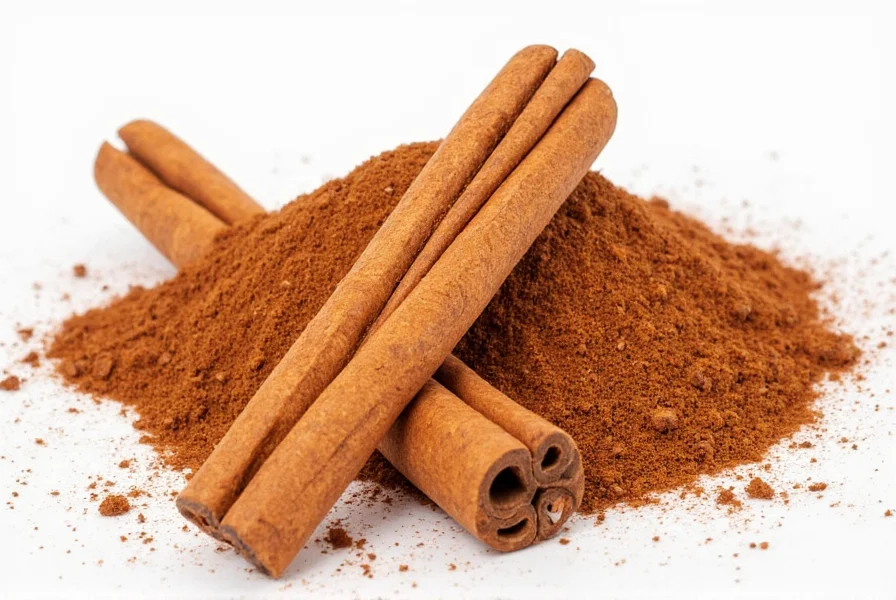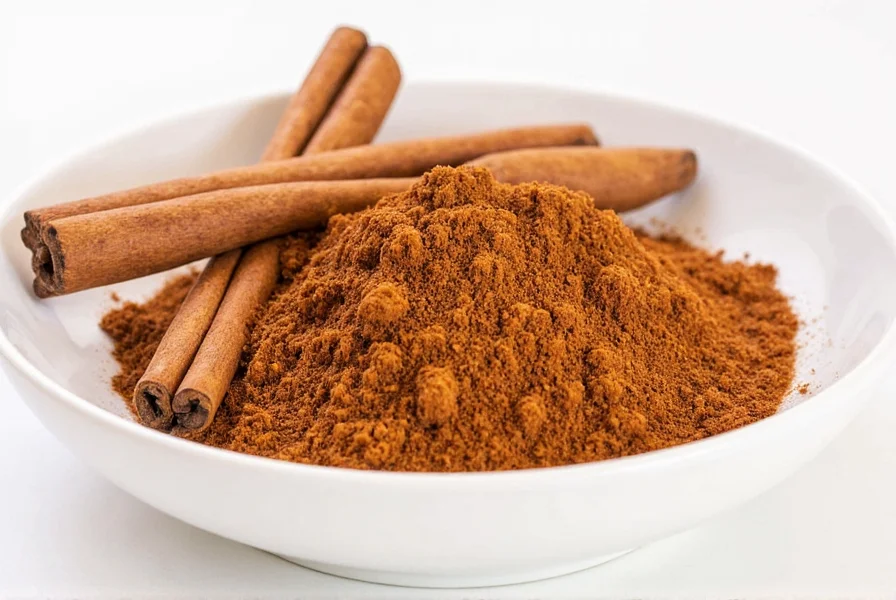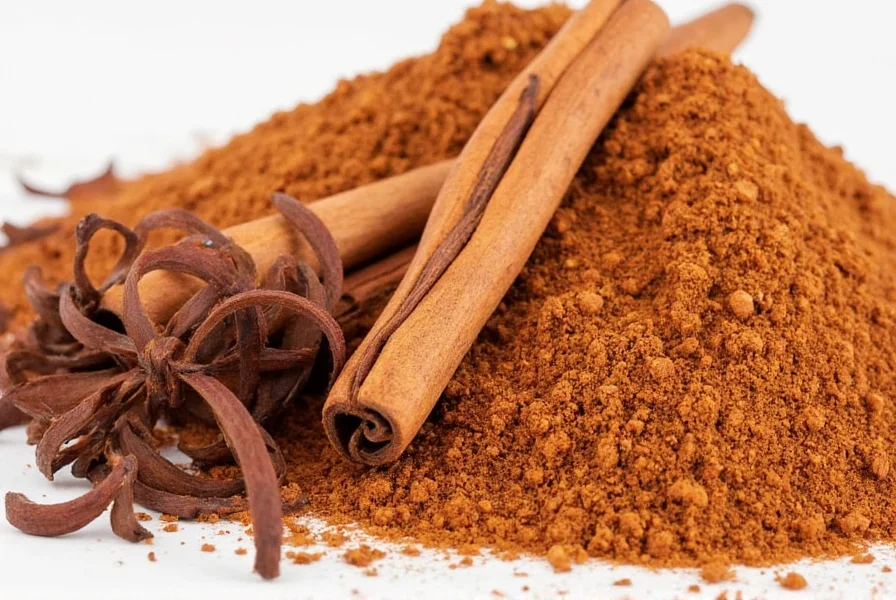Ceylon cinnamon (Cinnamomum verum) and Saigon cinnamon (Cinnamomum loureiroi) differ primarily in origin, flavor profile, coumarin content, and culinary applications. Ceylon cinnamon, often called ‘true cinnamon,’ originates from Sri Lanka, has a delicate, sweet flavor with subtle citrus notes, contains significantly lower coumarin levels (making it safer for regular consumption), and features multiple thin, soft bark layers that form a tight scroll. Saigon cinnamon, a type of cassia cinnamon from Vietnam, delivers a more intense, spicier heat with robust sweetness, contains up to 63 times more coumarin than Ceylon, and has a single thick, hard bark layer that forms a loose, open scroll. For daily use or health-focused applications, Ceylon is generally preferred, while Saigon excels in recipes requiring bold cinnamon presence.
When comparing ceylon vs saigon cinnamon, understanding their fundamental differences helps you make informed choices for both culinary and health purposes. These two popular cinnamon varieties often get confused in grocery stores, yet they possess distinct characteristics that affect flavor, safety, and culinary applications. Let's explore what sets them apart and how to choose the right type for your needs.
Origin and Botanical Classification
Ceylon cinnamon, scientifically known as Cinnamomum verum (meaning ‘true cinnamon’), primarily grows in Sri Lanka, with smaller productions in India and Madagascar. This variety represents only about 10-15% of global cinnamon consumption. Saigon cinnamon, a specific type of cassia cinnamon (Cinnamomum loureiroi), originates from Vietnam and constitutes the majority of ‘cinnamon’ sold in supermarkets across North America and Europe. Despite common labeling, most products labeled simply as ‘cinnamon’ actually contain cassia varieties like Saigon rather than true Ceylon cinnamon.

Physical Characteristics Comparison
| Characteristic | Ceylon Cinnamon | Saigon Cinnamon |
|---|---|---|
| Bark Structure | Multiple thin, papery layers forming tight, delicate scrolls | Single thick, hard layer forming loose, open scrolls |
| Color | Light tan to light brown | Dark reddish-brown |
| Texture | Soft, easily crumbles when broken | Hard, difficult to break |
| Inner Bark | Finely grooved | Smoother surface |
| Coumarin Content | Approximately 0.017g/kg (very low) | Approximately 10.8g/kg (very high) |
Flavor Profile and Culinary Applications
The difference between Ceylon and Saigon cinnamon becomes immediately apparent when tasting them side by side. Ceylon offers a delicate, complex flavor with subtle citrus and floral notes, mild sweetness, and gentle warmth that doesn't overpower other ingredients. This makes it ideal for dishes where cinnamon should complement rather than dominate—think delicate pastries, custards, fruit compotes, and beverages like chai tea.
Saigon cinnamon delivers a much more intense experience with pronounced heat, robust sweetness, and bold spiciness. Its powerful flavor stands up well in recipes requiring strong cinnamon presence, such as snickerdoodles, cinnamon rolls, spice cakes, and hearty stews. Professional bakers often prefer Saigon for baked goods where cinnamon needs to shine through other flavors, while pastry chefs favor Ceylon for more refined desserts.
Health Considerations: The Coumarin Factor
One of the most critical differences when evaluating which cinnamon is better for health involves coumarin content. Coumarin, a naturally occurring compound, can cause liver damage in sensitive individuals when consumed in large quantities over time. Saigon cinnamon contains dramatically higher levels of coumarin (up to 63 times more) than Ceylon cinnamon.
The European Food Safety Authority recommends a maximum daily coumarin intake of 0.1 mg per kilogram of body weight. For a 150-pound person, this translates to approximately 6.8 mg of coumarin daily. Just one teaspoon of Saigon cinnamon may contain 5-12 mg of coumarin, potentially exceeding safe limits with regular consumption. Ceylon cinnamon's minimal coumarin content makes it the safer choice for daily use, especially for children, pregnant women, or those with liver conditions.
Practical Identification Guide
Learning how to tell Ceylon from Cassia cinnamon helps you make informed purchases. Examine the quills: Ceylon forms multiple thin layers that create a tight, cigar-like scroll with a soft, brittle texture that crumbles easily when bent. Saigon typically appears as a single thick, hard layer forming a loose, open scroll that resists breaking.
When ground, Ceylon cinnamon produces a lighter tan powder with fine texture, while Saigon creates a darker, reddish-brown powder. The smell test reveals Ceylon's more delicate, sweet aroma compared to Saigon's intense, spicy fragrance. For definitive identification, check product labels for scientific names: Cinnamomum verum indicates Ceylon, while Cinnamomum loureiroi specifies Saigon.

Price and Availability Considerations
Understanding the Ceylon vs Saigon cinnamon price difference explains why most grocery stores stock primarily Saigon. Ceylon cinnamon typically costs 5-10 times more than Saigon due to more labor-intensive harvesting methods and lower global production. While Saigon remains widely available in standard supermarkets, specialty food stores, health food markets, and online retailers offer authentic Ceylon cinnamon.
When shopping, look for specific labeling: ‘Ceylon cinnamon,’ ‘true cinnamon,’ or ‘Cinnamomum verum.’ Avoid products labeled simply as ‘cinnamon’ which almost always contain cassia varieties. For health-focused consumers, the higher cost of Ceylon represents a worthwhile investment for regular use given its superior safety profile.
Storage Recommendations
Both cinnamon varieties benefit from proper storage to maintain freshness and potency. Keep cinnamon in airtight containers away from light, heat, and moisture. Ground cinnamon retains optimal flavor for 6-12 months, while whole quills maintain quality for 1-2 years. Ceylon's more delicate structure makes it particularly susceptible to moisture damage, so ensure containers are completely sealed. For longest shelf life, store in the refrigerator or freezer in moisture-proof containers.
When to Choose Which Type
Select Ceylon cinnamon when: preparing delicate desserts, making beverages, using cinnamon regularly for health benefits, cooking for children or those with liver concerns, or creating dishes where subtle cinnamon flavor is desired. Choose Saigon cinnamon when: baking robust cookies or cakes, making spice-heavy recipes, creating holiday treats requiring strong cinnamon presence, or using cinnamon infrequently in small quantities.











 浙公网安备
33010002000092号
浙公网安备
33010002000092号 浙B2-20120091-4
浙B2-20120091-4